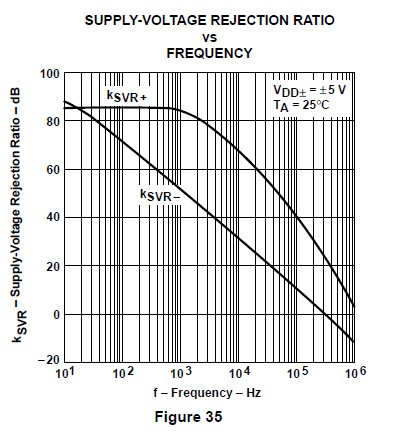Hi-
I am trying to figure out a source of noise in the project I'm working on. The signals I am amplifying are very low frequency, DC to about 3 Hz. The noise is within this band so I can't filter it out. The PCB is small, only about 3.5" X 2.5", 6 layer with power and ground planes and splits in the planes between the analog and digital sections. Also on this same PCB are other analog signal chains, a processor, several small, lightly loaded TPSxx switching regulators, TPS7A4901DGN and TPS7A3001DGN linear regulators (to power the analog section), and a plug in 3rd party Bluetooth module. The Bluetooth module is being used Class 2.
I am seeing very low frequency noise in the DC to 3 Hz band that seems to be correlated to RF transmit activity on the Bluetooth module.
I have recently read about EMI rejection ratio and how it can cause voltage offset errors in even low frequency and I am trying to rule out this as a source of the noise I am seeing. The op amps in this signal chain are TLC2252AIPW (I'm also using TLC2254AIPW's elsewhere on this PCB). Gain is about 5. Do these parts have any known issues with EMI rejection or rectification of local RF sources causing noise or offset shifts? There is also an INA from another vendor (I'm going to ask them these same questions). Other parts in this same signal chain are an LM4040A41IDBZ reference and an ADS8326IDGK 16 bit ADC. Could these also have EMI/RF sensitivities?
My other option is that power supplies are the source of this noise. The PCB is powered by a Li-Ion battery. A TPS61020 boost regulator and TPS60401 inverter supply the TPS7A4901 and the TPS7A3001 respectively which then provide power for the analog circuits. A separate TPS63000 buck-boost regulator supplies the digital circuits and the Bluetooth module. It is possible that current spikes drawn by the Bluetooth module as it is transmitting are causing the boost regulator and the buck-boost regulator to interact in some strange way.
I'm leaning towards the EMI RR issue as being the cause however.
Thanks,
-Randy


